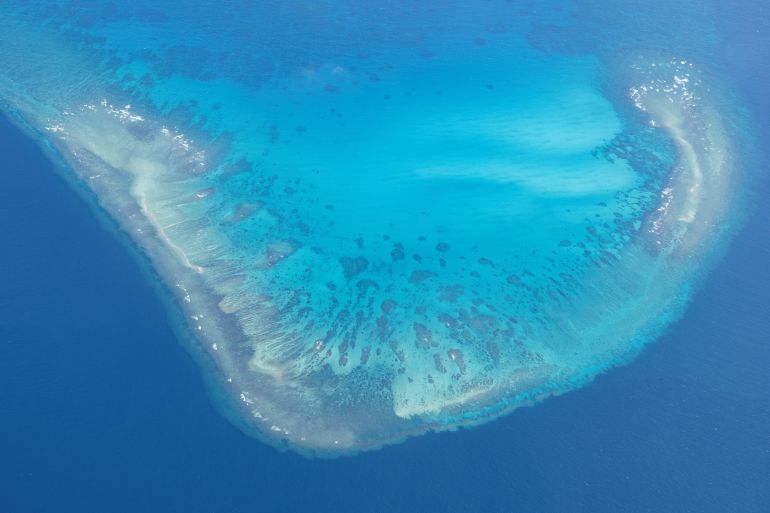In a growing standoff in the South China Sea, the Philippines is exploring the possibility of taking Beijing to court over alleged environmental destruction within its exclusive economic zone (EEZ). As tensions escalate, Manila is considering legal recourse, potentially filing a second case with the International Court of Arbitration. This move is aimed at holding China accountable for its alleged destruction of coral reefs within the Philippines’ maritime territory, further deepening the rift between the two nations.
Environmental Damage Assessment Underway at Iroquois Reef
The Philippines has leveled accusations against China, asserting that it has caused significant environmental damage to Iroquois Reef, a part of the Spratly Islands situated within the Philippines’ EEZ. Manila is currently evaluating the extent of the damage caused by Beijing’s actions, including the ecological impact on this vital marine ecosystem. The dispute has intensified, with China countering that the Philippines is merely attempting to “create political drama” on the global stage.
Rising Tensions in the South China Sea: Philippines vs. Chinese Coastguard
Throughout the year, tensions between the Philippines and China in the South China Sea have been on the rise. The Philippines has accused the Chinese coastguard of engaging in “dangerous maneuvers” around Second Thomas Shoal, also known as Ayungin Shoal in the Philippines. These actions have further fueled the discord between the two nations, bringing their territorial disputes into sharp focus.
China’s expansive territorial claims in the South China Sea, encapsulated by its contentious nine-dash line, have been a longstanding point of contention. Beijing has undertaken extensive construction of artificial islands on rocky formations and islets, some of which have been transformed into military outposts. Additionally, China has deployed its coastguard, fishing fleets, and maritime militia to the disputed waters, challenging not only the Philippines but also the claims of Brunei, Malaysia, Taiwan, and Vietnam in part or in full.
History of Disputes: Philippines Weighs Options Following Previous Legal Battle
In 2012, following a prolonged standoff, Beijing gained control of Scarborough Shoal from the Philippines, prompting Manila to take legal action by approaching the Permanent Court of Arbitration (PCA) in The Hague. The PCA ruled in favor of the Philippines in 2016, unequivocally stating that the nine-dash line and China’s associated claims lacked a legal basis. Regrettably, Beijing chose to disregard this international ruling.
Now, the Philippines is reevaluating the possibility of renewing legal action, potentially through the PCA, specifically concerning the environmental damage caused by China. Solicitor General Menardo Guevarra has confirmed the ongoing assessment of the case’s merits. The Department of Foreign Affairs has pledged its support for Guevarra’s office in any legal action they decide to undertake.
Spokeswoman Teresita Daza has emphasized the importance of the United Nations Convention on the Law of the Sea (UNCLOS), which obliges nations to protect and preserve the marine environment. China, being a party to UNCLOS, is bound by these obligations. Daza reiterated that these obligations apply not only within national jurisdiction but also extend to maritime areas beyond it.
The Philippine coastguard has reported extensive damage not only to the seabed around Iroquois Reef, believed to be rich in oil and gas deposits, but also at Sabina Shoal, located approximately 72 nautical miles northwest of Palawan. Recent surveys have painted a grim picture of a marine ecosystem that appears “lifeless,” with China’s alleged “illegal and destructive” fishing activities being held responsible.
Responding to these allegations at a press conference in Beijing, Ministry of Foreign Affairs spokesperson Mao Ning dismissed them as “political drama from fiction.” Mao Ning urged the Philippines to remove the Sierra Madre, the ship intentionally grounded at Second Thomas Shoal nearly a quarter-century ago, which has since served as a symbolic marker reinforcing Manila’s territorial claim in the waters.
The Philippines has faced numerous confrontations with China while attempting to resupply the sailors stationed on the Sierra Madre. Second Thomas Shoal, located about 105 nautical miles northwest of Palawan, remains a hotbed of contention in the ongoing South China Sea dispute. As the legal and diplomatic tensions mount, the world watches closely to see how this complex situation unfolds in the international arena.















